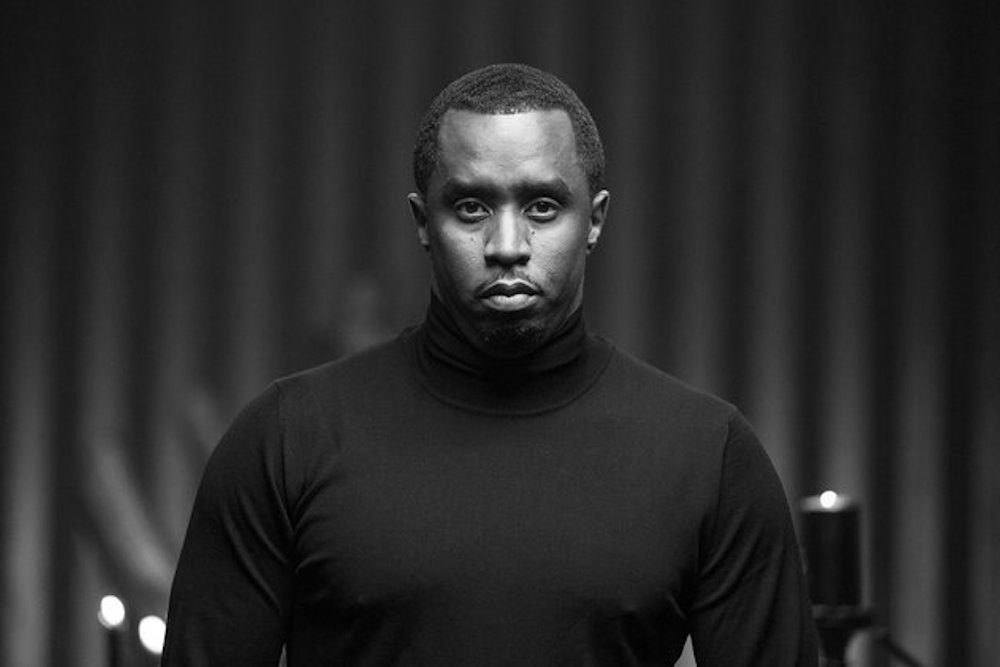On his new record 4:44, JAY-Z frequently and explicitly lays out his long-held belief in how black freedom is attainable through both artistic expression and wealth. He was hardly rap’s first exemplar of the principle—that might be Russell Simmons—but he is close enough to its most grandiose proponent: Diddy, aka Puff Daddy, aka P. Diddy, aka Sean “Puffy” Combs. On Can’t Stop Won’t Stop: A Bad Boy Story, a new documentary on Diddy’s Bad Boy empire, Hov shows up to pay tribute. “He took it to an aspirational level that no one had ever seen,” he says. “As a young black men in America, when he got that first $40 million check from Clive Davis, that made us say, ‘Oh, OK, we know our worth now.'”
Diddy’s prideful maximalism is the undergirding theme of Can’t Stop, which follows the Bad Boy crew as they prepare for their two-night anniversary stand at Brooklyn’s Barclays center. The Daniel Kaufman-directed flick also offers a truncated look at the label’s history, in order to add narrative weight. It recalls music documentary specials like Stop Making Sense or Shut Up and Play the Hits—with a bit more melanin, of course, owing to lengthy list of guest stars like Total, Nas, and Mary J. Blige.
With the exception of a whole television channel, Diddy hasn’t directly produced any culture-shifting artistic material in years. Still, his image is irreproachable enough that even his reclined body on a stairwell is cause for headlines. According to the romanticized idea, he willed himself to this level of prestige—his mantra is right there in the title of the movie. The deeper story of what motivated that initial will to succeed, however, is largely untold; the Bad Boy archival footage and retrospective interviews only graze at that sort of exposition. Instead, much of the plot points are already embedded into cultural lore: Bad Boys’ steep commercial rise in the ’90s, and the tragedy of the Notorious B.I.G.‘s death both wounding and propelling Diddy to greater heights. While the backstory may intrigue hip-hop novices—did you know Biggie was signed to Uptown Records before rolling with Bad Boy?—the scenes will likely be a rehash to experienced fans.
The irony of the biography’s trappings is that the stakes are already self-evident in the concert lead-up. For one, the second show is on Biggie’s birthday, the significance of which needs no explanation. Diddy’s aggressively self-mythologizing persona pops up to entertain: Unsatisfied with his drummers’ rehearsals, he proclaims “We ain’t no wedding band. This shit is not the jazz festival, none of that shit.” He points to Mase’s tenure as a pastor to proclaim that “artists have really gone from Bad Boy to God—there’s really no in between,” which just treads the line of blasphemy.

Also Read
KEEPING IT REAL — ROUND ONE!
His remarks and frustration might suggest reality show gimmickry, but there is moving transparency. One of the first scenes in the movie is Diddy laying shirtless and vulnerable as he receives treatment for his injured shoulder. In another moment, Lil’ Kim struggles not to cry during a candid conversation about life after Biggie. The clips give Bad Boys’ defining grandeur an added dimension: When Diddy declares his crew “gods” in one of his rousing speeches, it sounds like he’s trying to stave off their own mortality.
That deeply human ambition isn’t the film’s only strength. Kaufman’s cinematography is incredible: The closing concert sequence manages to transform DMX into Aries and portray Diddy, Nas, and JAY-Z as shimmering statuettes of black decadence. Since that’s essentially Bad Boy’s ethos, you could consider Can’t Stop Won’t Stop a success simply on its aesthetic merits. Diddy wouldn’t ask for anything else.




